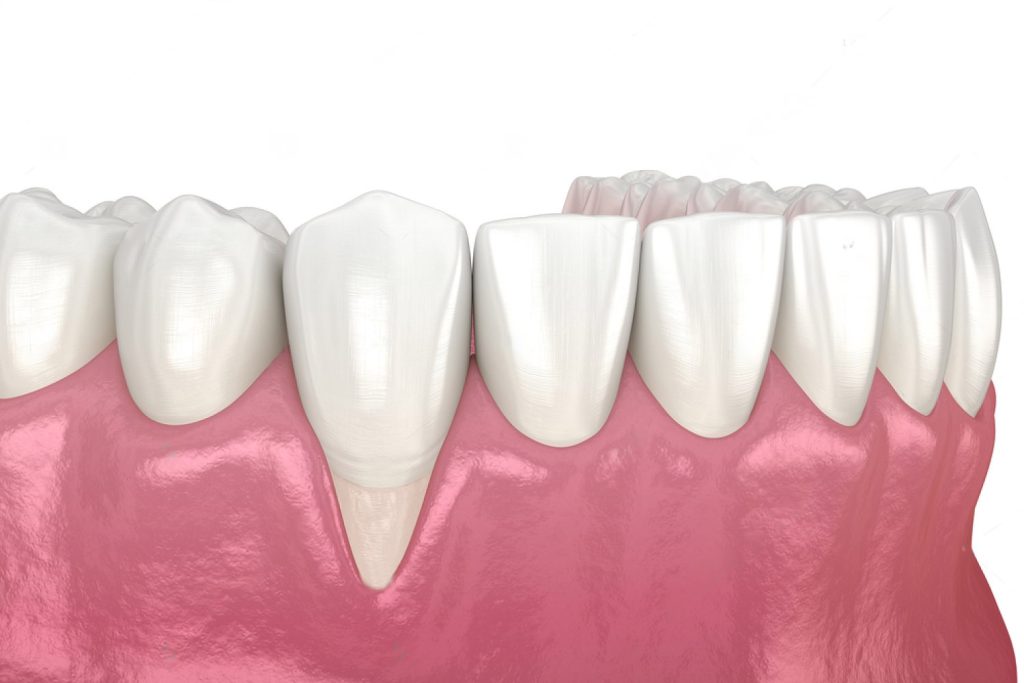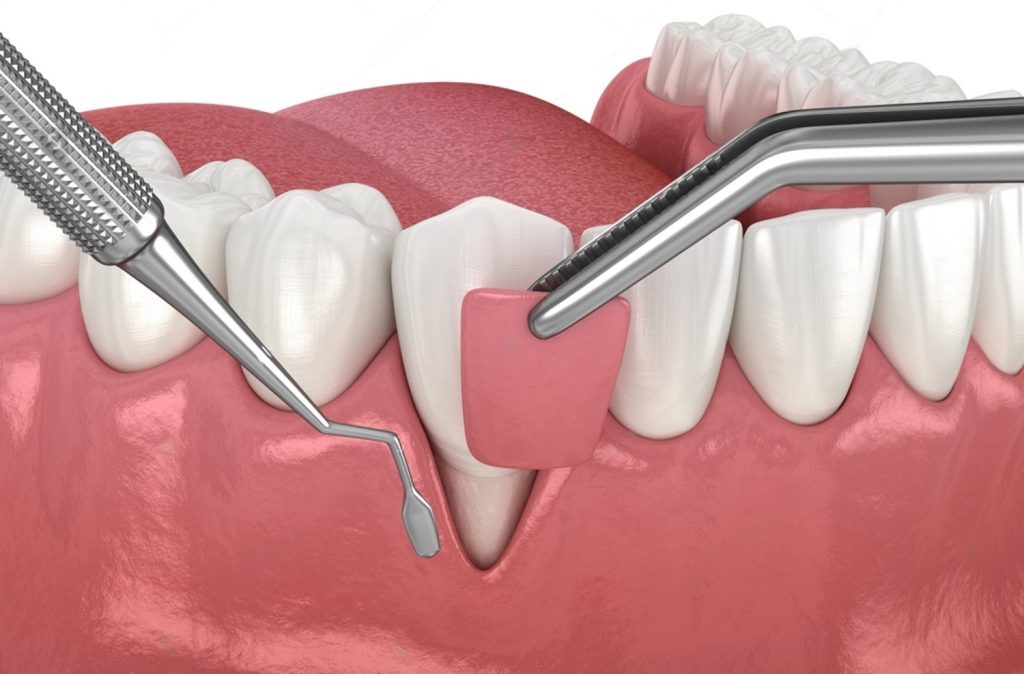Gum grafting, also known as soft tissue grafting, is a specialized surgical procedure designed to treat gum recession, a common condition where the gums gradually pull away from the teeth, exposing the sensitive tooth roots. If left untreated, gum recession can lead to increased tooth sensitivity, higher risk of tooth decay, and even tooth loss. At Toronto North Periodontics, our board-certified periodontists are experts in gum grafting, helping patients restore their gum health and protect their teeth.
Gum recession occurs when the gum tissue surrounding the teeth begins to wear away or pull back, exposing more of the tooth or the tooth’s root. This can result in a number of dental health issues, including:
Gum recession is often caused by factors such as aggressive brushing, periodontal disease, genetics, hormonal changes, or the natural aging process. It’s important to address gum recession early to prevent further damage to the teeth and gums.

Gum grafting is a surgical procedure that restores the gum tissue around the teeth, covering exposed tooth roots and preventing further gum recession. By transplanting healthy tissue from another area of the mouth, typically the roof of the mouth (palate), gum grafting can rebuild the gumline and protect the teeth from decay, sensitivity, and other complications.
There are several different types of gum grafts, depending on the patient’s needs and the severity of gum recession. Your periodontist will assess your condition and recommend the most appropriate type of graft for you:
Connective Tissue Graft: This is the most common type of gum grafting procedure. A small flap is created in the roof of the mouth, and tissue from underneath the flap is removed and placed over the exposed tooth root. The flap is then stitched back, and the grafted tissue is sutured into place over the recession site. This technique is ideal for covering exposed roots and thickening the gum tissue.
Free Gingival Graft: In this procedure, a small amount of tissue is taken directly from the roof of the mouth without creating a flap. This method is often used in patients with thin gums who need additional tissue to strengthen and enlarge the gumline.
Pedicle Graft: In a pedicle graft, the gum tissue is taken from an area adjacent to the tooth that needs treatment. A flap is partially cut and pulled over the exposed root, and sutures are used to secure it in place. This technique is ideal for patients who have enough gum tissue near the affected tooth.
Alloderm Graft: For patients who prefer not to use tissue from their own palate, an alloderm graft may be used. This procedure involves using donor tissue, eliminating the need for tissue removal from the patient’s mouth. This is a great option for patients who may require extensive grafting or wish to avoid discomfort from the palate.

